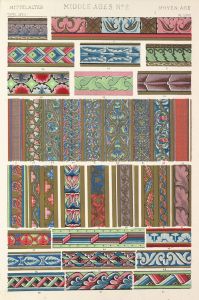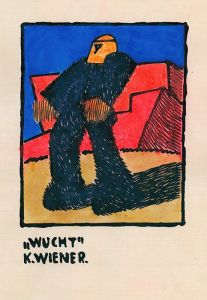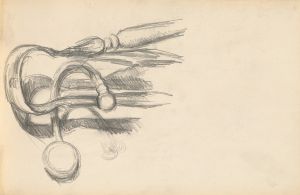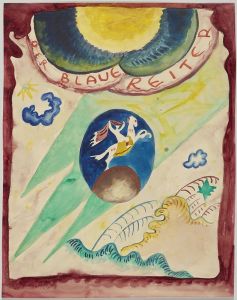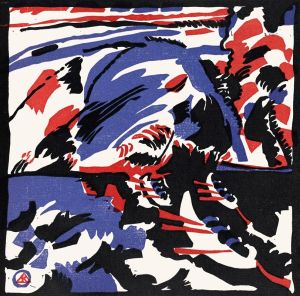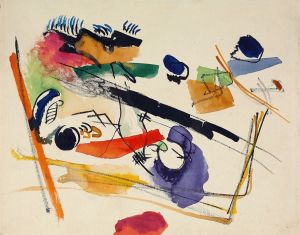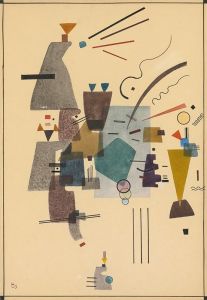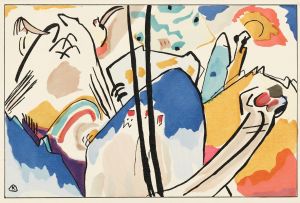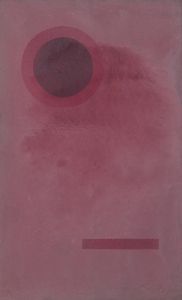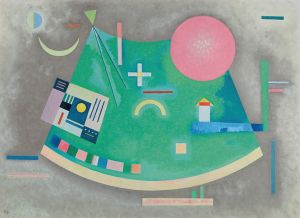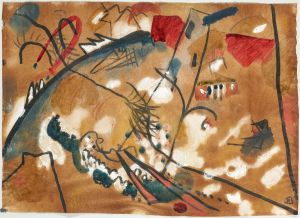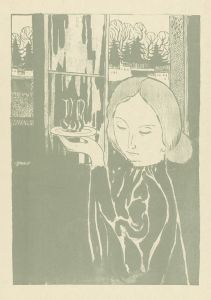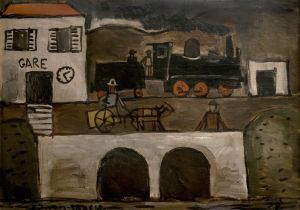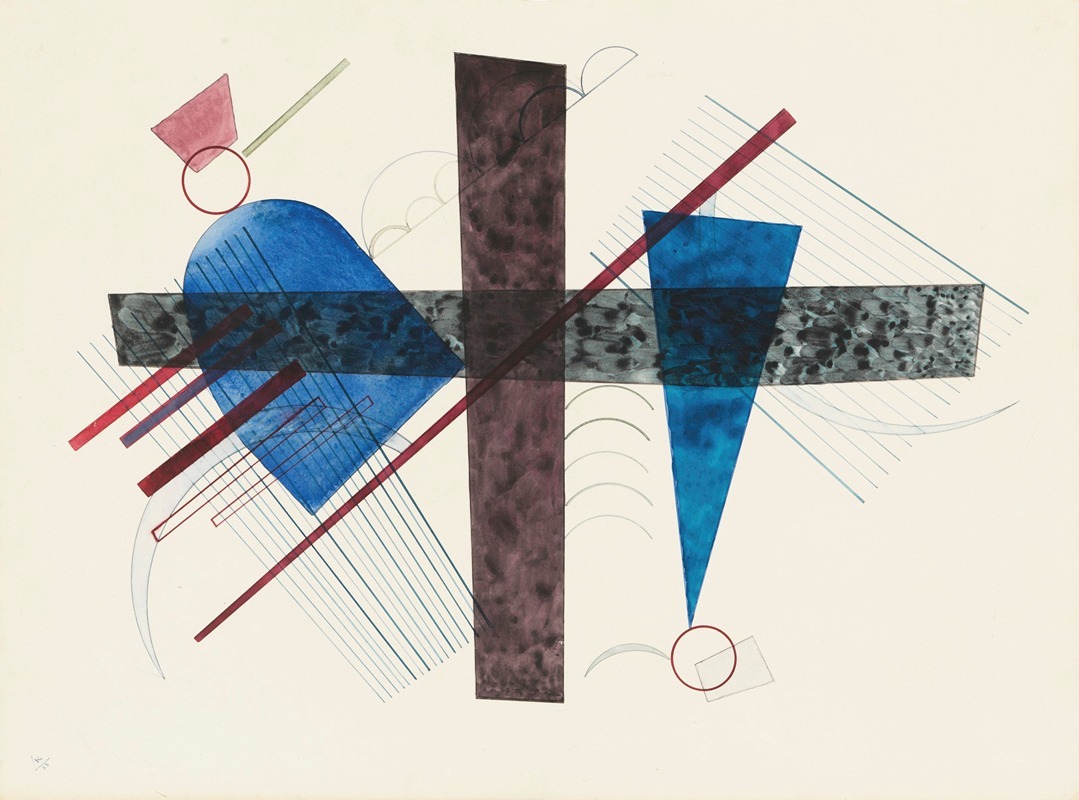
Blau in Rund und Spitz
A hand-painted replica of Wassily Kandinsky’s masterpiece Blau in Rund und Spitz, meticulously crafted by professional artists to capture the true essence of the original. Each piece is created with museum-quality canvas and rare mineral pigments, carefully painted by experienced artists with delicate brushstrokes and rich, layered colors to perfectly recreate the texture of the original artwork. Unlike machine-printed reproductions, this hand-painted version brings the painting to life, infused with the artist’s emotions and skill in every stroke. Whether for personal collection or home decoration, it instantly elevates the artistic atmosphere of any space.
"Blau in Rund und Spitz" (Blue in Round and Pointed) is a painting by the Russian-born artist Wassily Kandinsky, who is widely regarded as one of the pioneers of abstract art. Kandinsky was born on December 16, 1866, in Moscow, and he initially pursued a career in law and economics before turning to art in his thirties. His work is characterized by a deep exploration of color, form, and spirituality, and he sought to convey emotions and ideas through abstract compositions.
"Blau in Rund und Spitz" was created in 1929, during a period when Kandinsky was teaching at the Bauhaus, the influential German school of art, design, and architecture. The Bauhaus was founded by Walter Gropius in 1919 and became a hub for avant-garde artists and designers. Kandinsky joined the faculty in 1922 and remained there until the school was closed by the Nazi regime in 1933.
The painting exemplifies Kandinsky's mature style, which often featured geometric shapes, bold colors, and a sense of dynamic movement. In "Blau in Rund und Spitz," Kandinsky uses a palette dominated by shades of blue, which he believed had a deeply spiritual and calming effect. The composition is structured around a series of circular and pointed forms, creating a sense of balance and tension. The interplay between the round and pointed shapes suggests a dialogue between harmony and conflict, a theme that recurs in much of Kandinsky's work.
Kandinsky's approach to art was heavily influenced by his synesthetic experiences, where he could perceive colors as sounds and vice versa. This unique perception informed his belief that art should transcend mere representation and evoke a deeper, more universal response. He articulated these ideas in his seminal theoretical work, "Concerning the Spiritual in Art," published in 1911, where he argued that abstract art could express the innermost feelings of the artist and resonate with the viewer on a profound level.
"Blau in Rund und Spitz" reflects Kandinsky's interest in the spiritual and emotional potential of abstract forms. The painting's title, which translates to "Blue in Round and Pointed," directly references the primary elements of the composition. The use of blue, a color Kandinsky associated with spirituality and depth, combined with the geometric forms, creates a visually striking and thought-provoking piece.
Kandinsky's time at the Bauhaus was marked by collaboration with other leading artists of the time, including Paul Klee, László Moholy-Nagy, and Josef Albers. This environment fostered a cross-pollination of ideas and techniques, which is evident in the innovative and experimental nature of Kandinsky's work from this period.
After leaving the Bauhaus, Kandinsky moved to Paris, where he continued to develop his abstract style until his death on December 13, 1944. His legacy as a pioneer of abstract art endures, and his works are held in major collections around the world, including the Solomon R. Guggenheim Museum in New York, the Centre Pompidou in Paris, and the Städtische Galerie im Lenbachhaus in Munich.
"Blau in Rund und Spitz" remains an important example of Kandinsky's contribution to the development of abstract art, showcasing his ability to convey complex ideas and emotions through the interplay of color and form.





